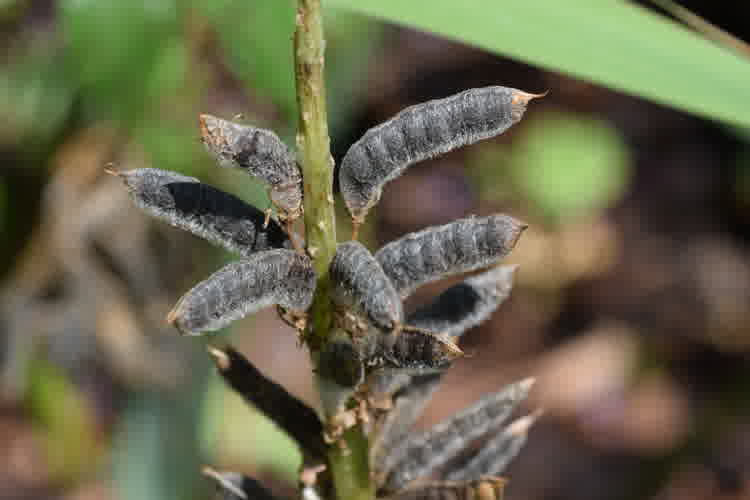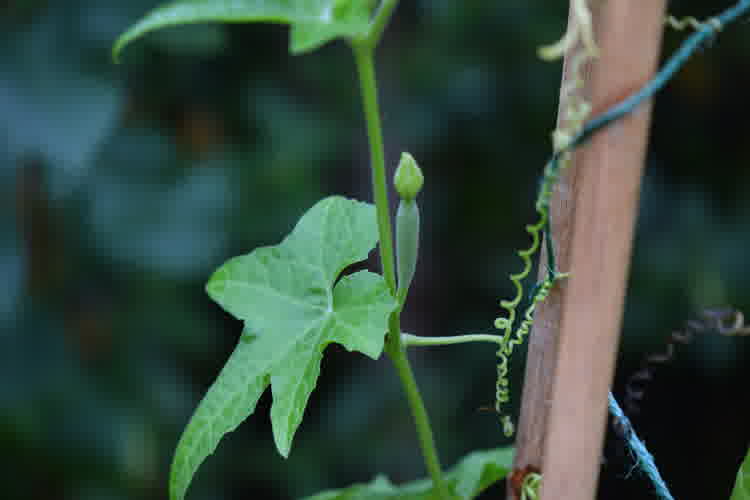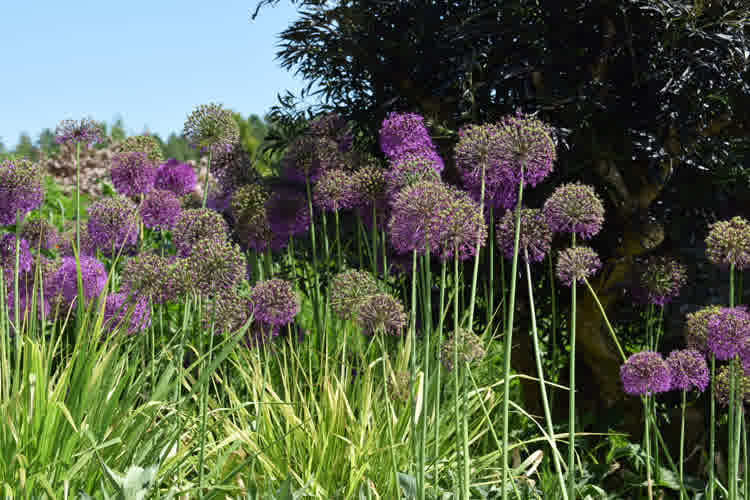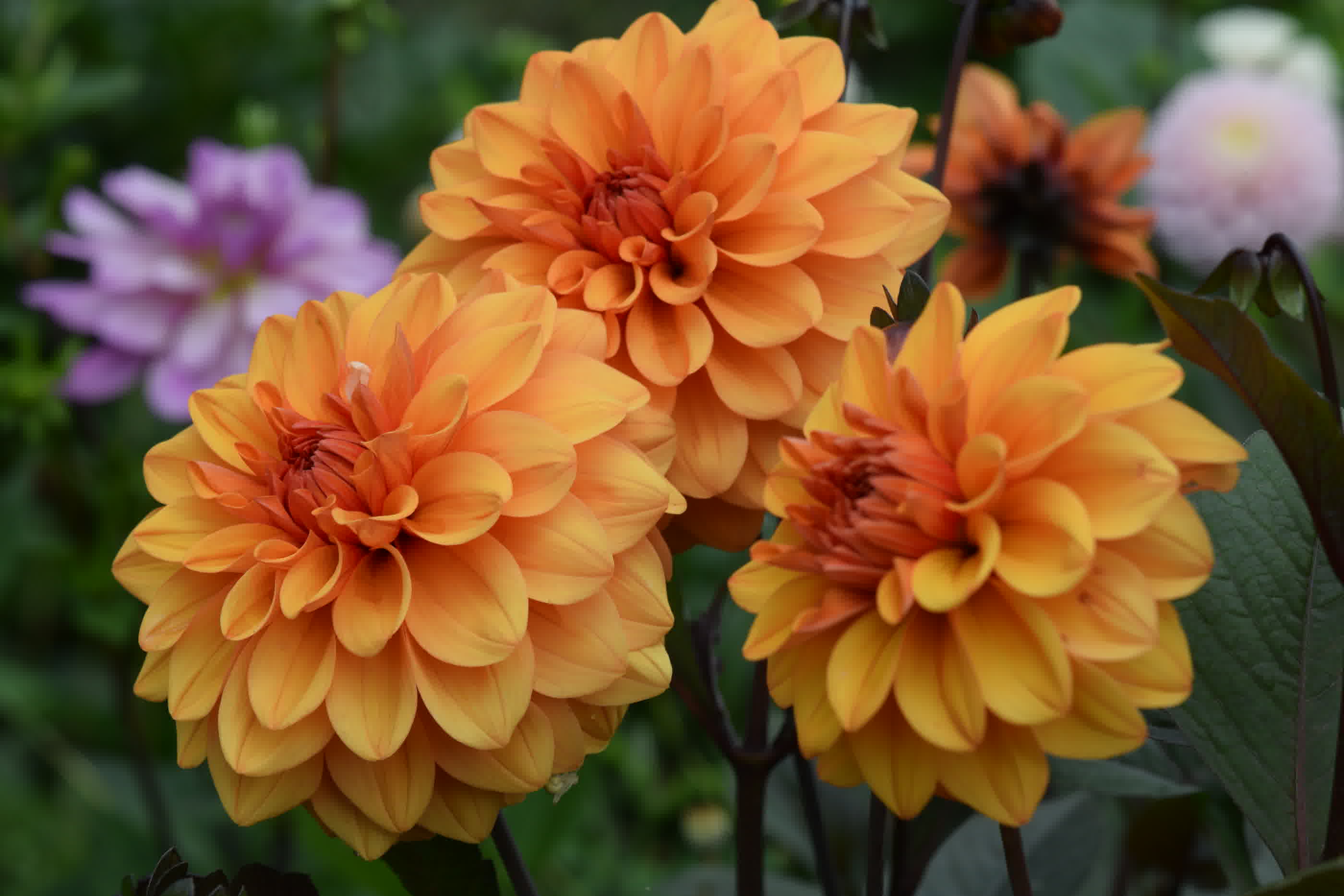
Dahlias
Table of Contents
Varieties
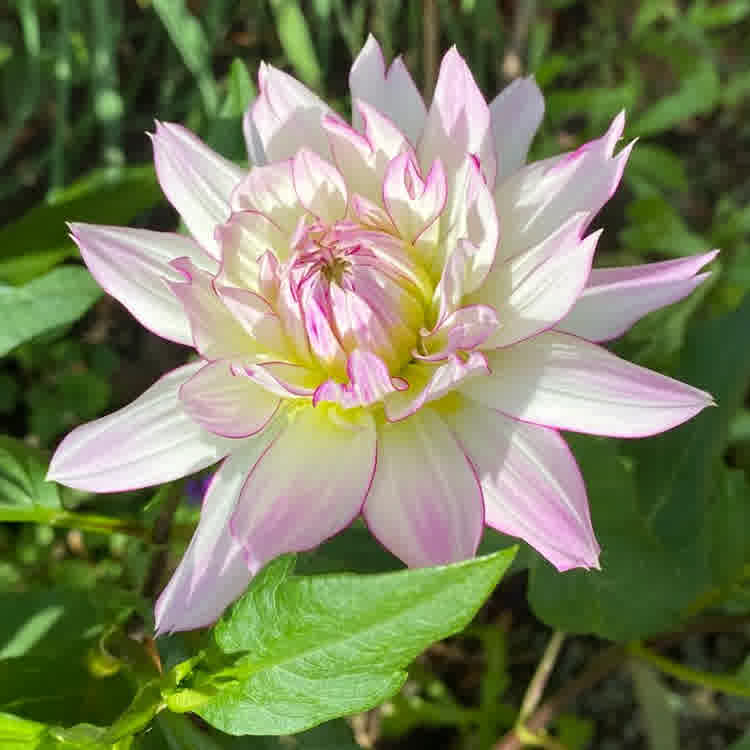
To say there are many varieties of Dahlias is an understatement.
Dahlias range in all aspects, from colour, height, flower size and shape. They come in pretty much any shade of colour except blue.
Plant height typically ranges from 2ft to 5+ft.
Dahlias produce a single flower per stem. Foliage is typically green. However, some varieties, such as the David Howard dahlia, have dark, almost purple-black leaves.
Dahlias are perennial plants. However, they are tender perennials. This means they will not survive cold winters with freezing temperatures.
Some people grow dahlias in their gardens as annuals. Although, you can overwinter the tubers to keep them growing year after year. We'll go over this in detail in the ongoing care section.
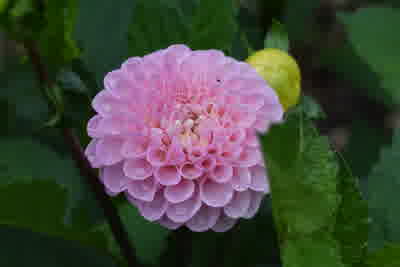

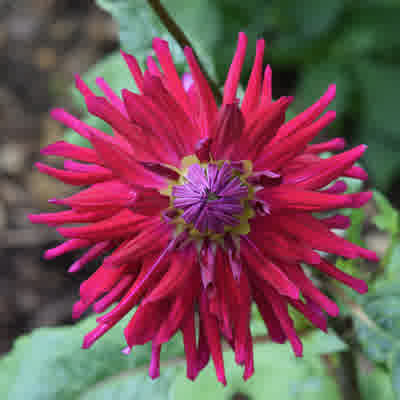
Planting
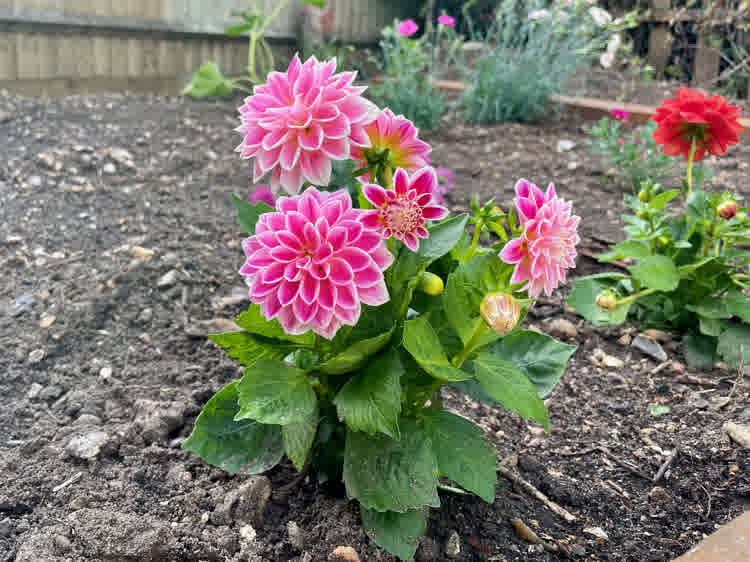
Dahlias require full sun with free-draining, rich soil. A sheltered position is best, especially for dahlias that produce large flowers.
Plant dahlia tubers outside in spring after the last frost.
Dig a hole and place the tubers so they will sit just below the soil surface, no deeper than a couple of inches.
Cover the tubers with the excavated soil and water in well.
You can start your tubers off earlier indoors in pots, transferring them outdoors once the chance of frost has gone.
Keep the soil moist, watering as required.
You should start to see shoots from your dahlia tubers around 4 to 6 weeks later.
Ongoing care
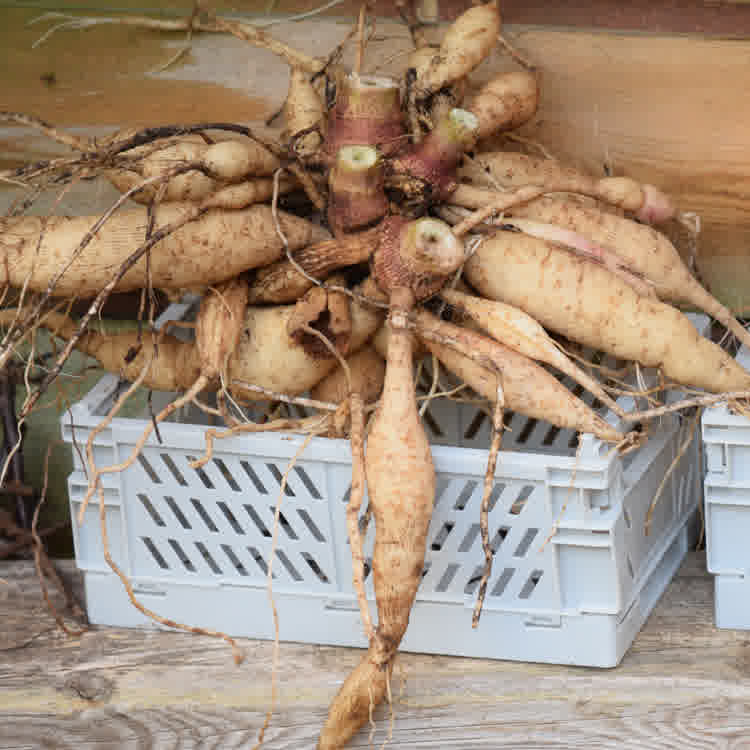
Water Dahlias regularly, keeping the soil moist. Ensure the water can drain freely, as waterlogged soil can lead to tuber rot. Adding a layer of mulch around your dahlia plants can help the soil retain moisture.
With regular deadheading, dahlias can continue to bloom from summer until the first frost.
Dahlias which produce large flower heads, such as Café au Lait, will benefit from supports, such as garden stakes or peony cages. This should prevent the flowers from being toppled by wind or rain.
Fertilisers low in nitrogen and high in potassium can improve flower yield. Feed once to twice a month from mid-summer to mid-autumn.
Overwintering Dahlias
There are two options when it comes to overwintering Dahlias. Lift and store or protect in the ground.
Lift and Store
Carefully dig up the tubers using a garden fork. Try your best to avoid damaging the tubers in the process, as fresh wounds could make them susceptible to rot during storage.
Use a hose to wash the remaining soil off the tubers, removing as much soil as possible.
Cut the stem down to just above the crown of the tuber. Allow the tubers to dry with plenty of ventilation before proceeding to storage.
Once dry, place the tubers into cardboard boxes. I typically add a layer of wood shavings to the bottom of the box. Place the tubers in and cover completely with more wood shavings. However, any similar insulation will do.
Keep the box in an unheated but frost-free environment, such as a garage or shed.
Periodically check your tubers throughout the winter and inspect for signs of rot.
The tubers can then be planted directly in the ground the following spring after the last frost date or started earlier in pots indoors.
Protect in the ground
Another method to overwintering dahlias is to protect the tubers in the ground throughout winter.
Cut the stems to around 2-4 inches and heavily mulch them. This layer of mulch should prevent the frost from penetrating the soil deep enough to reach the tubers.
Be sure to check out this guide for more details on protecting your plants from frost.
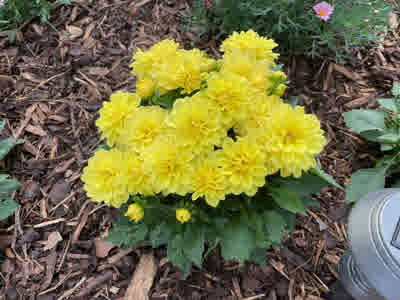
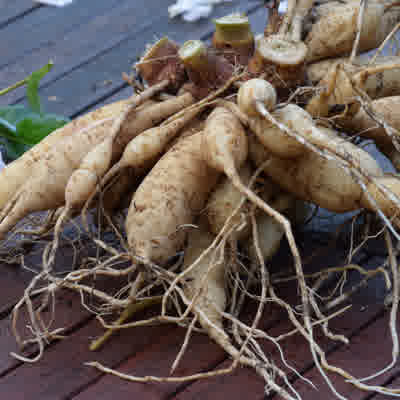
Pest and diseases
Regularly inspect your plants for signs of pests and diseases. Some of the more common problems for Dahlias include:
Pests
These mites are tiny, using a magnifying glass can help you spot them. They vary in colour from green-yellow to orange-red. Symptoms include mottling of the leaf's upper surface and very fine webbing on the plant.
There are multiple species of aphids. Typically, they're known as greenfly or blackfly. However, species vary in colour. They feed by sucking the sap out of plants which can lead to stunted plant growth. Curled leaves can also be a sign of aphids. You should be able to see aphids when looking closely. They tend to be found at the tips of plants feeding on the younger, softer shoots.
No magnifying glass is needed here. Slugs and snails are easier pests to identify. They'll feed on the plant's foliage causing ragged edges and large holes in the leaves, and of course, they'll leave a silvery slime trail of destruction.
Holes chewed through leaves and no trace of slime are tell-tale signs of hungry caterpillars eating their way through your plant's leaves.
Diseases
Powdery mildew is a fungal disease. Symptoms of this disease are white powdery spots on leaves that can also affect the stems. They'll usually appear on the lower leaves first and spread to the rest of the plant with the number of spots increasing.
Stem rot is caused by a fungal infection. Typically seen in poor draining, waterlogged soil. Look out for white mould growing around the base of the plant in the soil and stems.
